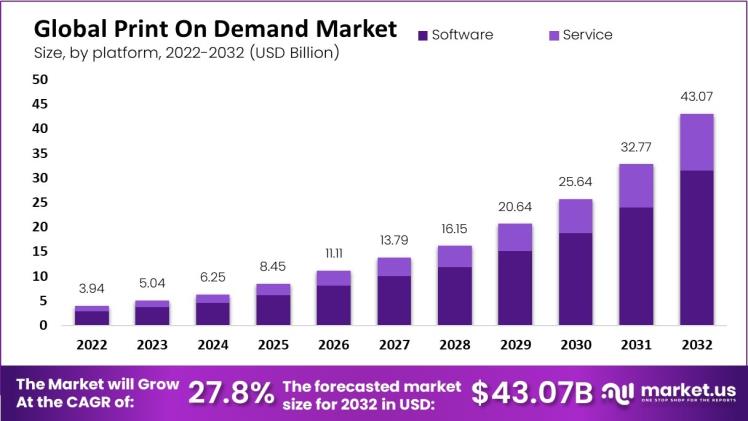Budgeting for Success in the Print on Demand Industry

The print on demand industry is thriving in today’s era. Whether you’re a designer, an artist, or a small business owner looking to expand your product range, utilizing print on demand platforms offers a cost-efficient means to bring your creative designs to life. With expenses and no inventory requirements, it’s no surprise that more entrepreneurs are venturing into this dynamic field.
Nevertheless, achieving success in the print on demand sector necessitates planning and budgeting. While you can take inspiration from businesses like Gelato print on demand, we will delve into essential areas where budget management plays a pivotal role in securing sustainable growth to guide you through this competitive landscape.
1. Production Expenses: Optimizing Value for Money
A benefit of print on demand platforms is their handling of production and order fulfillment tasks. However, understanding how production costs can influence your line is crucial. While most POD platforms offer pricing models, it’s vital to compare fees across platforms and consider factors like product quality, shipping choices, and customer support.
When assessing production expenses, striking a balance between cost-effectiveness and quality is paramount. Customers anticipate receiving value for their money when buying items online. Therefore, investing in top-notch materials can enhance customer satisfaction and foster repeat purchases. While these superior materials may come with a price tag upfront, the long-term advantages surpass any initial costs.
2. Regarding Marketing Budget: Enhancing Your Visibility
No matter how exceptional your creations are, they will only attract buyers if customers are aware of them. Dedicating a portion of your budget to marketing endeavors is essential for driving sales in the realm of POD.
Utilizing social media advertising proves to be one of the cost-effective methods to reach potential customers intrigued by your niche designs. With Facebook Ads Manager, you can craft targeted campaigns tailored to demographics such as age groups, interests, and geographic locations.
Apart from paid promotions, social media marketing should not be underestimated. Establishing a presence involves creating compelling content, fostering connections with industry influencers, and engaging in pertinent communities. Keep in mind that networking and partnerships can significantly broaden your audience without requiring investments.
3. Design Tools and Software: Assets for Success
To distinguish yourself in the print on demand sector, producing quality designs is paramount.
Investing in design tools and software plays a role in planning for success.
Many designers rely on Adobe Creative Cloud as their software suite because of its features and ability to work with different file formats. Although the subscription cost may seem steep initially, the flexibility offered by Adobe Creative Cloud enables you to create a range of customized products to meet customer needs.
Exploring design resources like stock photo websites or font libraries that offer cost subscriptions or one-time purchases can significantly enhance the quality and variety of your designs without overspending.
4. Expanding Your Product Range: Strengthening Your Budget
After establishing a presence in the print on demand industry, diversifying your product lineup can boost your revenue streams while reducing risks associated with relying solely on one product line.
Utilize sales data from your products to spot trends within your niche market. By identifying which items are selling well, you can introduce products that align with your customer’s preferences and further expand your budget.
While introducing products entails an investment of time and possibly additional design resources, it opens up opportunities to reach new markets and customer segments that were previously untapped.
5. Keeping an Eye on Cash Flow: Practical Financial Management
No matter how thoroughly you map out your finances, unexpected events can impact your cash flow. It’s vital to monitor your cash flow and make adjustments as needed.
Prepare for seasonal demand fluctuations by saving up funds during sales periods to cushion any periods that may arise. Moreover, regularly staying on top of expenses and revenue will give you a picture of how profitable your print on demand businesses are and empower you to make informed decisions based on accurate financial information.
Conclusion
While diving into the print on demand field can be thrilling, achieving success hinges on budgeting and planning. By taking into account aspects like production expenses, marketing allocations, design resources, and product variety and keeping a watch on cash flow trends, you’ll be well prepared to navigate this evolving industry while increasing your chances for sustained success. Best of luck!


